If you're reading this, it's likely that you've had a problem with the DPF (diesel particulate filter) on your Isuzu truck that has sparked your concern. This critical emissions control technology is designed to capture particulate matter from diesel engine emissions, but over time, DPF can accumulate particulate matter and affect engine performance.
In this guide, we'll show you how to use the ANCEL X7HD Diagnostic to detect and understand the status of your ISUZU vehicle's DPD, as well as exploring what is meant by DPD automatic regeneration.
Step by Step Guide
Connect the Bluetooth VCI to the vehicle‘s diagnostic port via the diagnostic cable.
To power on the X7 HD, press and hold the power button for about 3 seconds. Gently tap anywhere on the display screen to unlock the X7 HD. Please note that the device will automatically pair with the powered Bluetooth VCI.
Tap the icon with the ANCEL logo on the left side of the display screen.
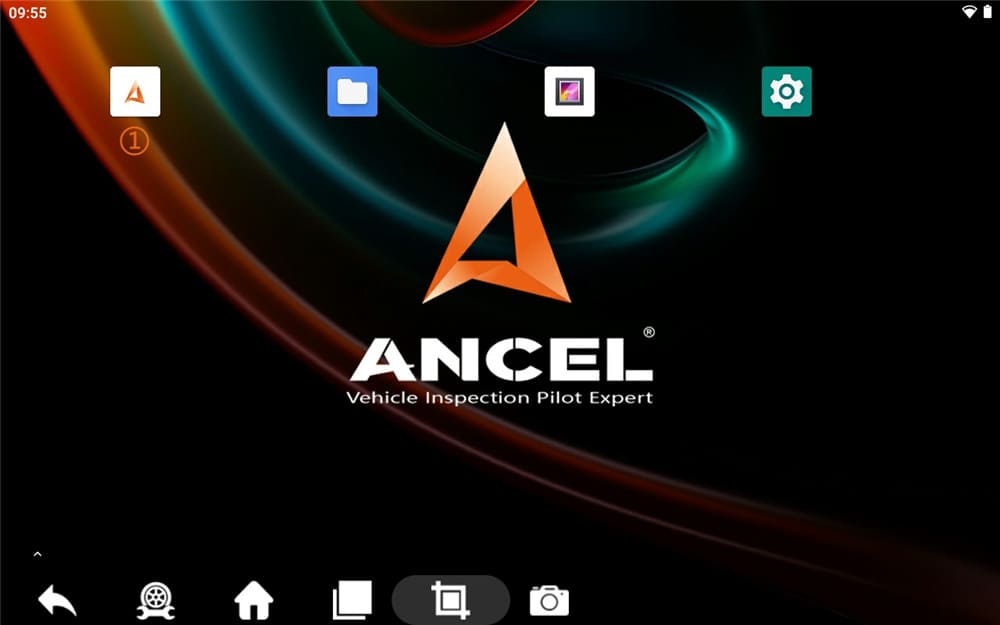
Access the "Diagnose" function.
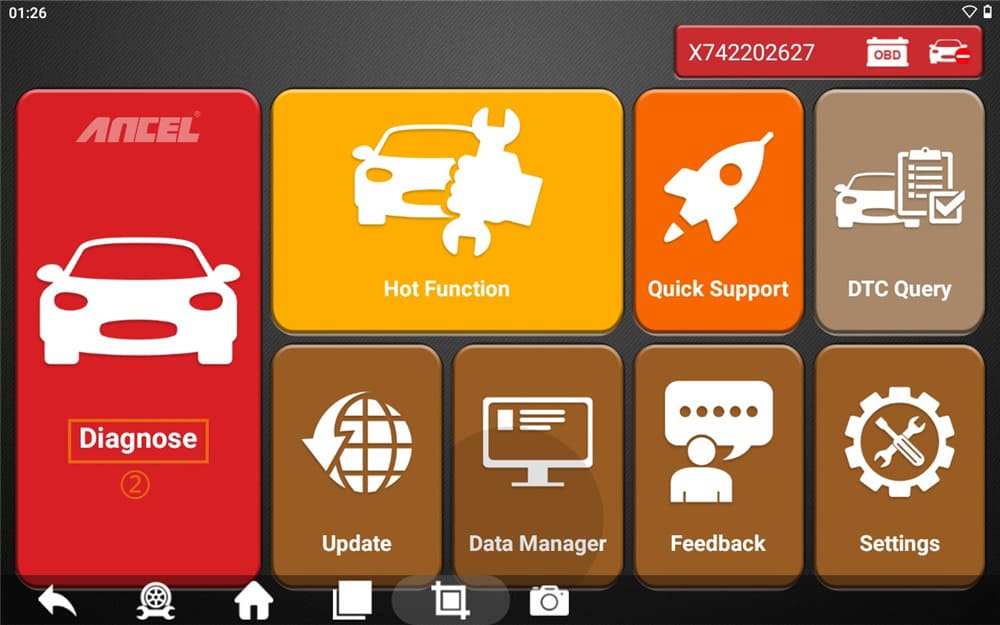
Access the "Diagnose" function. Navigate to "HEAVY TRUCK" and select the ISUZU car model.

Tap "Enter by system."

Choose "Powertrain."

Select the specific Powertrain mode. In our test, we are using the Powertrain model "4JJ1".
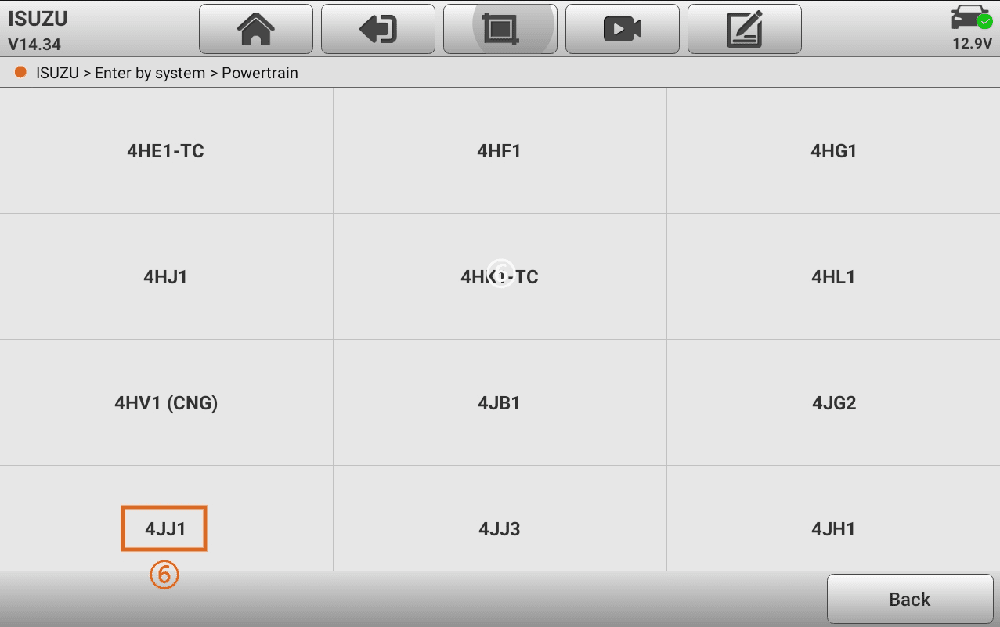
Then select "4JJ1-TC Euro 4."
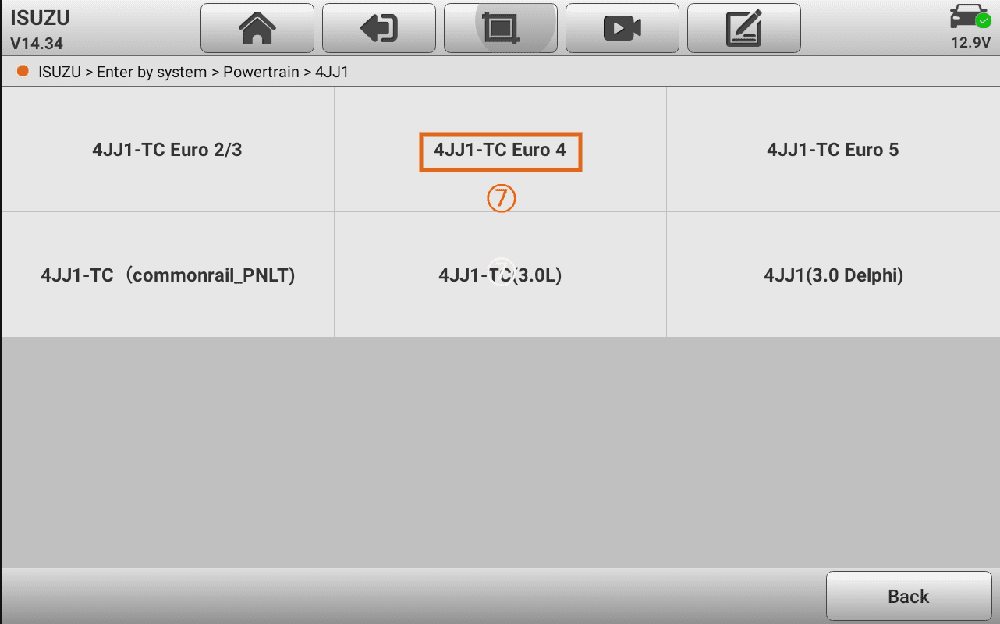
Proceed with "Read DTCs."

Now, you can see the fault code and the specific problem, it's about the DPF on the vehicle.
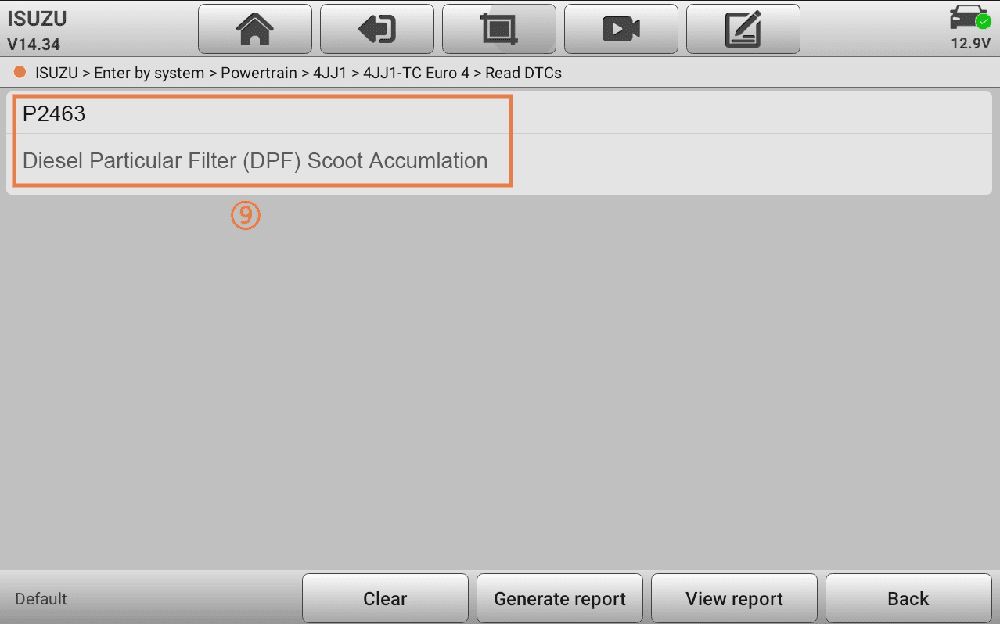
Go back to "Special Function."
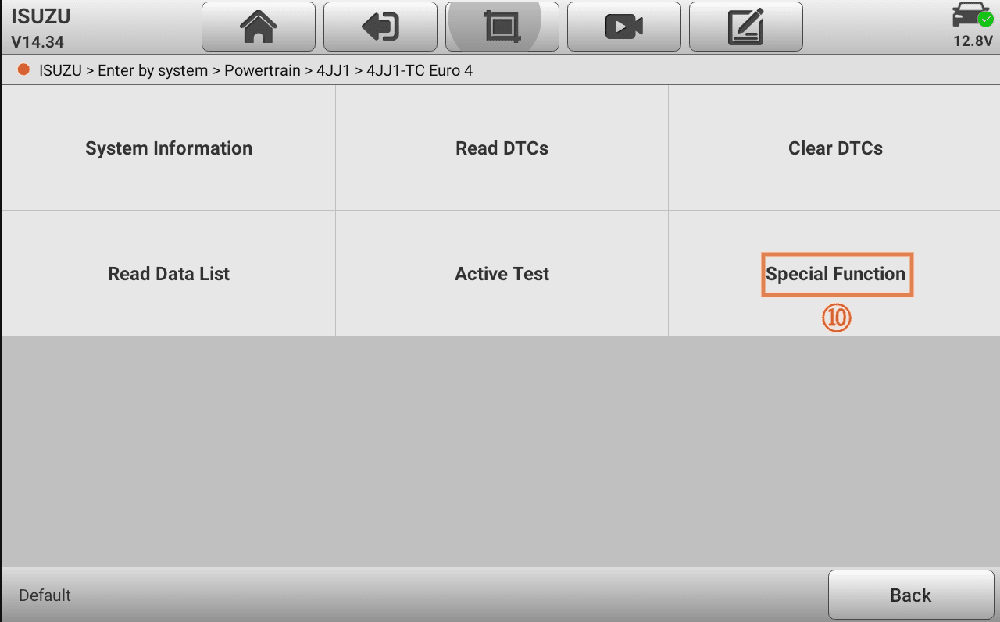
Choose “DPD Automatic regeneration” and perform it so that the detected problem refered to DPF would be solved.

About DPD Automatic Regeneration
"DPD Auto-Regeneration" refers to the process of equipping a diesel engine with a diesel particulate filter (DPF), which serves to capture and store carbon black and particulate matter in the engine's exhaust gases. Over time, this particulate matter builds up in the filter and can lead to clogging, which can reduce engine performance and increase emissions.
Automatic DPD regeneration is a way to clean the DPF and prevent it from clogging. There are two main types of DPF regeneration:
Passive regeneration: Under normal driving conditions, the exhaust temperature is high enough to burn the carbon black that has accumulated in the DPF. This passive regeneration process requires no driver intervention and usually occurs during highway driving, where exhaust temperatures are usually high.
Active regeneration: If the exhaust gas temperature does not reach the level required for passive regeneration (e.g. in city driving or traffic jams), the engine control unit (ECU) can initiate an active regeneration process. This involves injecting additional fuel into the exhaust system, usually in the diesel oxidation catalyst (DOC) or DPF itself. The extra heat generated by burning this fuel helps to burn the carbon black in the filter.
Automatic regeneration is critical to maintaining the efficiency of the DPF and preventing it from clogging. This process is usually controlled by the vehicle's ECU and the driver may not even know it's happening. However, it is important for drivers to ensure that their vehicle's systems are properly maintained, including addressing any warning lights associated with the DPF or emissions system, to ensure that the regeneration process is taking place efficiently, avoiding costly repairs and reduced engine efficiency.
FAQs
Q1: Can the ANCEL X7HD Diagnostic Tool detect all types of DPF issues in Isuzu trucks?
The ANCEL X7HD is capable of diagnosing a wide range of DPF issues in Isuzu trucks, including detecting specific fault codes related to DPF clogging and inefficiencies.
Q2: How does the ANCEL X7HD help in the DPF regeneration process for Isuzu trucks?
The ANCEL X7HD facilitates the DPF regeneration process by enabling the "DPD Automatic regeneration" function, which helps in clearing the particulate matter build-up in the DPF.
Q3: Is it necessary for drivers to manually initiate DPF regeneration in Isuzu trucks using the ANCEL X7HD?
While many modern Isuzu trucks feature automatic DPF regeneration managed by the vehicle's ECU, it operates effectively when capturing a lower level of particulate. However, manual intervention becomes necessary when it exceeds a certain threshold. In such cases, the ANCEL X7HD emerges as the ideal tool for initiating DPF regeneration.















